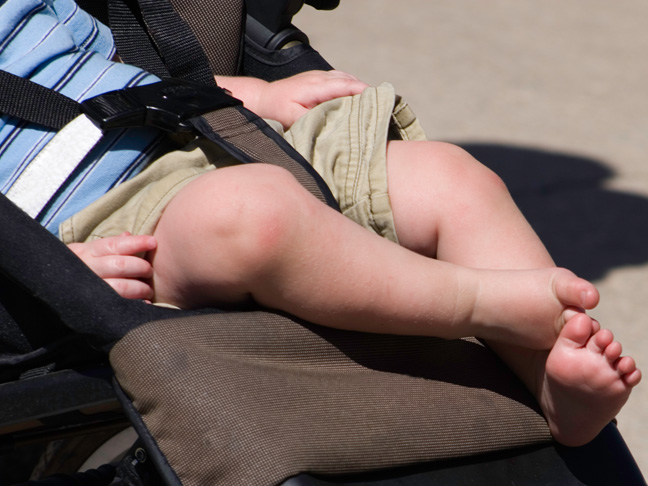What is heat rash?
Heat rash, which is also known as miliaria and prickly heat, is a skin condition that most commonly affects babies because their sweat glands aren’t fully developed (but older children and adults can get it, too). It’s a sign that a person is overheated. It’s caused by a blockage within the sweat ducts. The ducts get inflamed and a red rash appears. Any situation or environment that leads to increased sweating can cause heat rash, including sitting in a hot car, having a fever, or being very active. Tight clothing that rubs against the skin can also lead to the development of heat rash as well.
What does heat rash look like?
It typically looks like small clusters of tiny red pimple-like bumps in the same area. It tends to show up in areas where the skin rubs together or against clothing such as the head, neck, chest, diaper area, and armpits. If wearing a hat, your baby may get heat rash along the scalp line. It can also look like a cluster of small bubbles under the skin. In this case, the bubbles often open and will often not be red in color.
Is heat rash painful?
The rash may be ichy, but it’s not typically painful, even for babies (although it may look painful to parents!).
How is heat rash treated?
Most heat rash doesn’t require a visit to the doctor. Once you notice it on your baby, move her to a cooler place, and remove her sweaty clothing. You can put cool wash cloths on her skin to help make her comfortable more quickly, as well. Once your child has cooled down, it is important to keep the area with the rash dry. With time most heat rash with go away on its own. Don’t use and powders or ointments on heat rash; they may make symptoms worse. If the rash doesn’t go away in a day or two, or your baby has a fever, contact your pediatrician.
How can I prevent heat rash?
The best method of treating heat rash is to try to prevent it in the first place. Avoid over-bundling your baby. Don’t dress him in tight clothing. Minimize prolonged sun exposure. Keep your baby cool. Dress her in loose clothing that allows her skin to breathe, and keep her well hydrated.
More on Children’s Health:
- Diaper Rash: Is It Diaper Rash, Or Something Else?
- How to Do CPR on Babies & Children (with Illustrations)
- Tricks Pediatricians Use to Keep Their Own Kids Healthy
- Why Natural Remedies Aren’t Always Best (Even for Babies)
Photo: Getty








